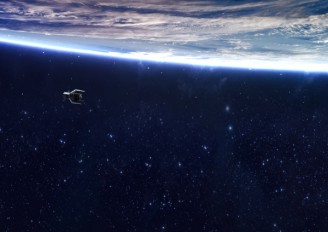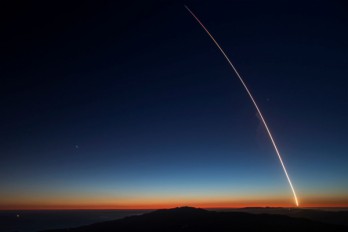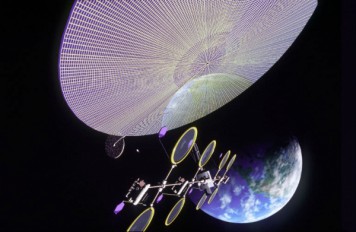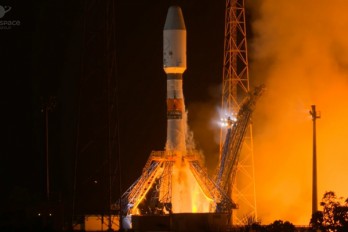How to address satellite debris issue

As years pass by, the assembly of satellites in space is beginning to become a major issue that needs to be urgently solved.
Space debris (or space waste) is a term that refers to the human-made objects which orbit the Earth but are not currently in use (e.g. defective or obsolete satellites or spacecraft debris). Given that those items remain firm and more are accumulated over time, dealing with space waste is a matter of urgency as collisions between orbiting items pose a high risk.
At this time, there are more than 20,000 space objects that orbit the planet and, according to experts, companies are willing to launch even more in the future without considering their adverse impact.
Some have expressed the opinion that the better solution to tackle the problem is to collect or sent out of orbit the deficient satellites or parts. However, a new study, recently published in the Proceedings of the National Academy of Sciences, suggests that the best solution is to charge the owners for every satellite that is in orbit. This would both benefit the space industry and mitigate irrepressible satellite launching. “We need a policy that lets satellite operators directly factor in the costs their launches impose on other operators,” Matthew Burgess, co-author of the study, an Assistant Professor in Environmental Studies and an affiliated faculty member in Economics at the University of Colorado Boulder, stated.
The authors of the study recommend applying an orbit fee for every satellite whether it is functional or not. The fees would be correlated with the specific orbit that the satellite will acquire since different orbits have different collision risks, a fact that is not taken into consideration in the current launching design. “In our model, what matters is that satellite operators are paying the cost of the collision risk imposed on other operators,” Daniel Kaffine, co-author of the study and a Professor of Economics and RASEI Fellow at the University of Colorado Boulder, said.
In order for this approach to work, the research team emphasizes that all countries that launch or own satellites must support the endeavor and charge the same fees depending on the satellite collision risk as mentioned above. It is not an unprecedented scheme since many countries utilize similar strategies for climate change projects and fishing industry.
Scientists stated that if their concept is implemented, the satellite industry would experience a stunning economic growth that would quintuple its current value by 2040. This growth would derive from the collision costs and the fact that the total crashes would be highly reduced.
Regarding the amount of the fees applied, researchers suggest an escalating cost that would reach about $235,000 per spaceship annually within the next 20 years.
Source: University of Colorado Boulder
Source: University of Colorado Boulder
Media
- Space Junk Around Earth
- Discovery
Want to read more like this story?

ESA launches robot to clean the atmosphere from satellite debris
Jan, 13, 2020 | NewsThe European Space Agency (ESA) will send a robot to clean space from the garbage gathered by s...

Robotic vehicles to fix broken satellites
Dec, 09, 2019 | NewsScientists from the University of Cincinnati in Ohio have developed robots that can fix defecti...

ESA satellite narrowly avoids collision with SpaceX craft
Sep, 02, 2019 | NewsESA (European Space Agency) reported changing a satellite's course to avoid a collision with a Space...

Scientists discovered new device that can stabilize and rotate satellites
Dec, 05, 2019 | NewsIn an effort to tackle satellite vibrations, scientists have discovered a brand-new device that can...

Satellite data and AI drive the next wave of sustainable infrastructure in the UK
Oct, 03, 2025 | NewsThe United Kingdom is advancing the integration of satellite data and artificial intelligence (AI...

How about space-based solar panels?
Apr, 19, 2018 | NewsThe concept was theorized over half a decade ago, as space-based solar arrays would be illuminated 2...

Global study shows spaceborne radar can accurately monitor bridge health
Oct, 13, 2025 | NewsA new international study has demonstrated that satellite-based monitoring can transform the way en...

Can satellites be used as an early warning system for landslides?
Aug, 04, 2017 | NewsA joint team of researchers from Newcastle University (UK), Chengdu University of Technology, Tongji...

Cheops Satellite launched to study exoplanets
Dec, 18, 2019 | NewsThe Cheops (CHaracterising ExOPlanet) Satellite that will explore outer space was launched on Decemb...
Trending

Vertical gardens in Mexico City to combat pollution

Saudi Park Closed After 360 Big Pendulum Ride Crashes to Ground, 23 injured

Characteristics of Load Bearing Masonry Construction

Taipei 101’s impressive tuned mass damper

Dutch greenhouses have revolutionized modern farming

Federal court rules Biden’s offshore drilling ban unlawful


